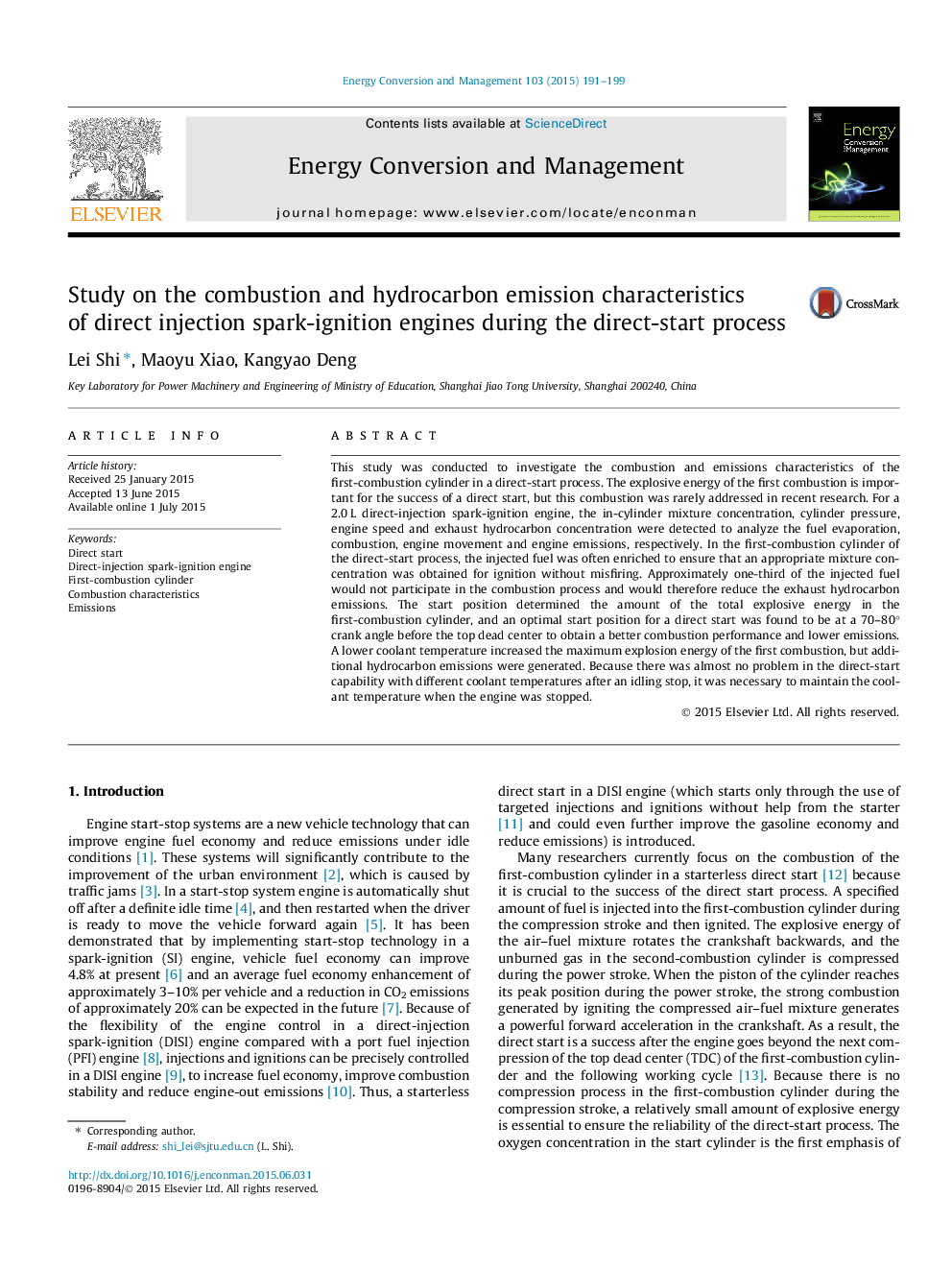| کد مقاله | کد نشریه | سال انتشار | مقاله انگلیسی | نسخه تمام متن |
|---|---|---|---|---|
| 771728 | 1462859 | 2015 | 9 صفحه PDF | دانلود رایگان |
• Mixture concentration in first-combustion cylinder of direct start is measured.
• Factors that affect direct start performances are investigated.
• Combustion characteristics of first-combustion cylinder are analyzed.
• Hydrocarbon emission is considered to determined control strategies of direct start.
This study was conducted to investigate the combustion and emissions characteristics of the first-combustion cylinder in a direct-start process. The explosive energy of the first combustion is important for the success of a direct start, but this combustion was rarely addressed in recent research. For a 2.0 L direct-injection spark-ignition engine, the in-cylinder mixture concentration, cylinder pressure, engine speed and exhaust hydrocarbon concentration were detected to analyze the fuel evaporation, combustion, engine movement and engine emissions, respectively. In the first-combustion cylinder of the direct-start process, the injected fuel was often enriched to ensure that an appropriate mixture concentration was obtained for ignition without misfiring. Approximately one-third of the injected fuel would not participate in the combustion process and would therefore reduce the exhaust hydrocarbon emissions. The start position determined the amount of the total explosive energy in the first-combustion cylinder, and an optimal start position for a direct start was found to be at a 70–80° crank angle before the top dead center to obtain a better combustion performance and lower emissions. A lower coolant temperature increased the maximum explosion energy of the first combustion, but additional hydrocarbon emissions were generated. Because there was almost no problem in the direct-start capability with different coolant temperatures after an idling stop, it was necessary to maintain the coolant temperature when the engine was stopped.
Journal: Energy Conversion and Management - Volume 103, October 2015, Pages 191–199
